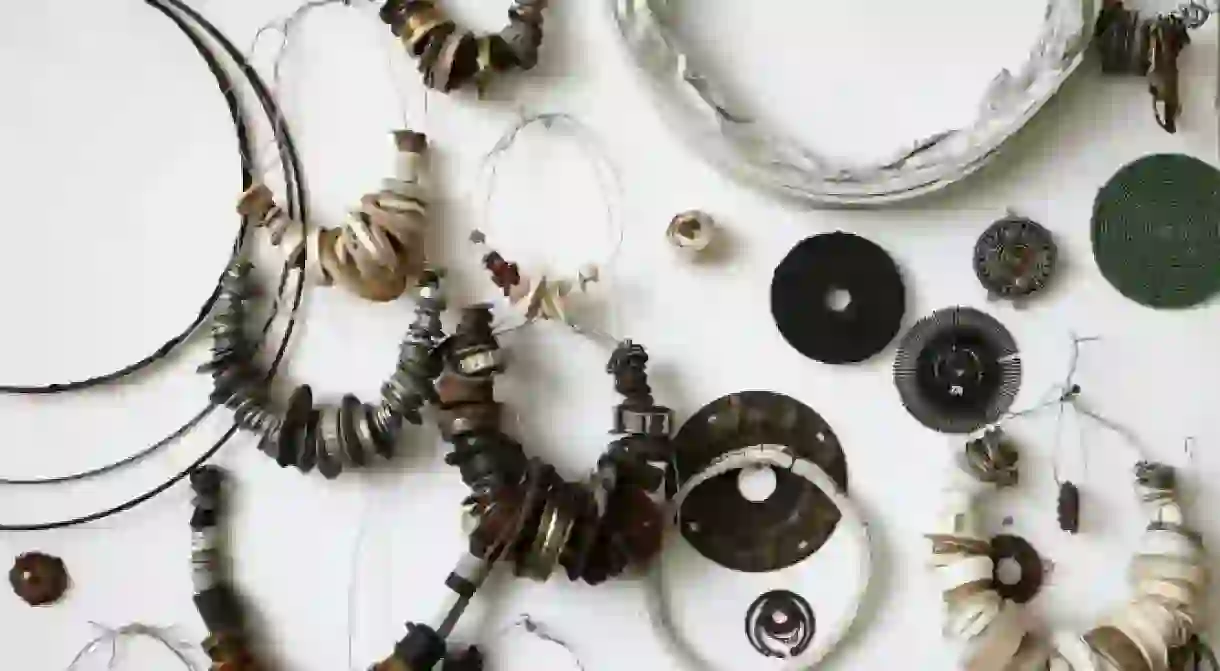Beyond the Backyard: Australia at the Venice Biennale

Art and Culture enthusiasts in Australia seek to spread the word about the Venice Biennale around the country, as they have stunned organisers and attendants of the exhibition in the past with the best of Australian contemporary visual arts since their first year in 1954 with Sidney Nolan. The 2013 national pavilion saw established artist Simryn Gill explore notions of place, landscape and culture among others as she represents Australia in the 55th Venice Biennale.

Sometimes set apart from the Europe and the international art scene due partially to their position geographically, Australia was set to have another successful year at the Venice Biennale exhibition as organisers prepared to showcase their best – Simryn Gill – at their national pavilion, managed by the Australia Council for the Arts. Although 2013 saw the country being represented by an established artist, the national pavilion has previously served to promote up and coming contemporary visual artists, giving them a chance to unleash their works to an international audience. The venue of the Australian national pavilion can be found in the Biennale Gardens, along with the 28 other countries situated within them. Designed by world-famous architect Philip Cox, the pavilion was opened in 1988. Intent on keeping the aesthetics of the building current, the Australian Council for the Arts have put plans in motion for its redevelopment, adapting it to display a fresher, cleaner-cut appearance. The 2013 curator of the pavilion is Catherine de Zegher, who has an illustrious history of curator-ship and written works in the arts world internationally and within Australia. Amongst other impressive commitments, she is currently working on an anthropology of her collection of essays on contemporary women artists, in addition to curating the 5th Moscow Biennale of 2013.

Singapore born artist Simryn Gill was born in Port Dickson, and today lives and works between Malaysia and her other residency in Sydney, Australia. Working predominantly with the medium of photography, but also with writing on paper, drawing, ink, sculpture, collecting and object-making, Gill addresses complex notions of landscape, place, situation and culture in an understated and cultivated fashion. Examples of her works that will be shown at this year’s Australian pavilion include her displays of found-objects, like the circular discoveries in Naughts (2010), and the stones, glass and other beach-sourced items she exhibits in Garland (2006). The eclectic nature of her works is shown through other displays, namely Pooja/Loot (1992) for which she has hidden small objects in carefully made alcoves that she has carved into old books. Another example of this style is Powerstation (2004), a set of colour versus monochrome photographs which she uses to juxtapose the inside of a power station with the items found inside a residential home. Her wish to understand landscape and place is relevant to the nature of life in Australia, as the surroundings and landscape there act as thought-provoking backdrops that inspire artists to question their placement. Gill highlights the theme of movement in her works, as Australia is renowned for its strict rules about the persons and produce that are permitted in and out of the country. As she moves objects in and out of different discourses she gives them new meaning, just as she takes on new identities as she moves between Malaysia and Australia.

One of her most famous projects is a collection of 40 photographs titled A small town at the turn of the century (1999-2000). These pictures were taken in Malaysia, in Gill’s hometown of Port Dickson. They often show portraits of people with their faces covered up with inanimate objects, such as fruit. With these playful, surrealist photographs Gill encourages the viewer to question important turning points in life (such as the turning of the century) and the ways in which we regard our memories of these events in later years, often omitting meaningful facts through carelessness and disregard. She has previously chosen to work with digital video just once in her work Vessel (2004), in which she used 16mm digital film to show a 30 second clip of a fishing boat meandering across the horizon. This resonates the hazy, wayward feel of many of her works. When discussing her process of photography and film she has said, ‘The looking takes on a kind of absent-minded, day-dreamy search for order, but not with a purpose to explain or describe.’ When viewing Gill’s works you can feel this laid back essence; it is reminiscent of the serenity of gazing into the distance of the Australian landscape.

Within the Australian national pavilion the viewer is sure to be faced with some truly stunning works of contemporary visual art, as they are presented with thought-provoking found items, the meanings of which have been redefined, complimented by stunning photography and hand-made objects.
Australia Team
Commissioner: Simon Mordant AM
Deputy Commissioner: Penelope Seidler
Curator: Catherine de Zegher
Venue: Pavilion at Giardini
About the Culture Trip’s Venice Biennale project
The 55th International Art Exhibition of the Venice Biennale will take place from 1 June – 24 November. The Culture Trip’s Venice Biennale Series is an article series leading up to the start of the exhibition. With 88 countries participating in this year’s Biennale — 10 of them for the first time — and 150 artists from 37 countries, our coverage over the next couple of months will highlight a selection of the National Pavilions that will be participating in the 2013 edition of the Venice Biennale. Follow the Biennale page on our site or The Culture Trip’s Twitter, Facebook and Pinterest pages for our daily Biennale articles and updates.
By Melissa Pearce













